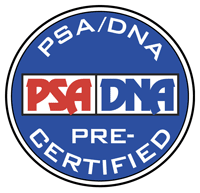ALS in pencil, signed “E,” one page, 8.25 x 11, no date. Handwritten letter to "J.V.M.," his wife's brother, John Vincent Miller (1873-1940). In full: "We have had much trouble with wax & phenol Resin since McWilliams had charge. Now we are in a bad way with phenol resin. We shall have to send Hoffman down to Straighten the Resin production out. Hereafter I shall demand & have made tests at Lab of everything used in making wax & resin—What about McWilliams, I understand he was formally a theatrical man if so he is probably passing the buck over to the foreman who probably has never been properly taught what to do, please investigate." In very good condition, with edge tears, fold splits, and chipping to the edges of the fragile, toned sheet.
According to the Edison General File Series for 1915 [TAE Papers] regarding Chemicals, it is noted that Edison expanded his production of organic chemicals after World War I and prevented other chemicals from being imported from Europe. During this year he established a 'new chemical plant at Silver Lake to convert benzol into phenol (carbolic acid).' There are notes also stating opening a second phenol plant at Silver Lake to supply the U.S. military with chemicals needed for such things as explosives. A mention on the National Parks Service website notes that in 1915 Edison was asked to 'head the Naval Consulting Board. With the United States inching closer towards the involvement in World War One, the Naval Consulting Board was an attempt to organize the talents of the leading scientists and inventors in the United States for the benefit of the American armed forces.' He accepted.
The Board ended up primarily serving as a 'precedent for future successful cooperation between scientists, inventors and the United States military.' Meanwhile, the correspondence in the TAE Papers regarding J.V. Miller at the Silver Lake plant includes many letters related to iron and nickel mixes used in alkaline storage batteries as well as letters on the Silver Lake plant producing phenol and also mention of the wax department. Phenol resin was mentioned as early as 1907 in a pocket notebook for February of that year [TAE Papers] and also mentioned in experiments for phonograph records in a May 1914 notebook used by an assistant in the chemical lab, probably W.B. Davis, relating to experiments to prevent wave formation on records while varnishing. Most of this work involved the use of phenolic resin.
The Belfer Cylinder Collection at Syracuse University Libraries notes, in the introduction, that Edison invented the phonograph in 1877, but the foil he used was not very usable. Shortly thereafter he developed wax cylinders for recording and reproducing sound which he marketed in 1880. But, in 1906, a more long lasting medium was developed, phenolic resin, an early relative of Bakelite. Based on the fact that the letter is to J.V. Miller, it is likely that Edison is referring to phenol resin used for the purpose of sound recording and is having difficulty with one of his suppliers, McWilliams. A note on Edison's reference to McWilliams. While no information has been found suggesting that Curtis Q. McWilliams was ever involved in the entertainment industry, his affiliation with Edison went back to 1883 when McWilliams was a director of the firm Kulp, McWilliams & Co. in Shamokin, PA. They were lumber dealers ("oak and white pine lumber, shingles, prop timber.," according to their letterhead).
In 1883, according to TAE Papers, they worked together on the construction of a central station. The folder contains "correspondence and other documents relating to the installation and operation of the central station and electric light system in Sunbury" which became the first commercially installed three-wire system. There are letters in the file from June of 1883 stating that Kulp, McWilliams & Co. were delivering poles and letters from Edison to them stating that the poles were crooked and therefore useless to him. Still, Edison seems to have continued working with this company.
The Kulp, McWilliams partnership was dissolved in 1886 and McWilliams and McConnell (a third partner) split off to run the ice and brick part of the business. It seems from this letter that Edison continued to have difficulties dealing with McWilliams, but information gleaned from other genealogical sources, McWilliams was involved in nearly all public enterprises in Shamokin throughout the rest of his life, so in one way or another, he would have had dealings with Edison. J.V. Miller was the manager of the Edison Chemical Works from 1913 until 1920, after which he became Edison’s personal business secretary. Previous to his working at the Edison Chemical Works at Silver Lake, Miller had, in and around 1900, worked for Edison at the Ortiz Mine in Dolores, New Mexico where they were searching for a method to separate gold from base rock [see the Thomas Edison Papers at Rutgers University, TAE Papers].

This item is Pre-Certified by PSA/DNA
Buy a third-party letter of authenticity for
$150.00
*This item has been pre-certified by a trusted third-party authentication service, and by placing a bid on this item, you agree to accept the opinion of this authentication service. If you wish to have an opinion rendered by a different authenticator of your choosing, you must do so prior to your placing of any bid. RR Auction is not responsible for differing opinions submitted 30 days after the date of the sale.
We use cookies on this site to improve your experience. By using this site, you accept our use of cookies. To learn more, please see our Privacy Policy.